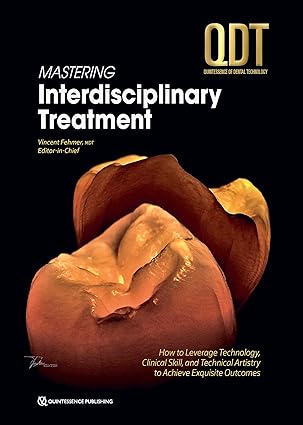CORE CONCEPT Stressor A biological, psychological, social, or chemical factor that causes physical or emotional tension and may contribute to the development of certain illnesses. Stress as a Biological Response In 1956, Hans Selye published the results of his research on the physiological response of a biological system to an imposed change on the system. Since his initial publication, his definition of stress has evolved to “the state manifested by a specific syndrome which consists of all the nonspecifically induced changes within a biologic system” (Selye, 1976). This combination of symptoms has come to be known as the fight-or- flight syndrome. Schematics of these biological responses, both initially and with sustained stress, are presented in Figures 1–1 and 1–2. Selye called this phenomenon the general adaptation syndrome. He described three distinct stages of the reaction: 1. Alarm reaction stage: During this stage, the physiological responses of the fight-or-flight syndrome are initiated. 2. Stage of resistance: The individual uses the physiological responses of the first stage as a defense in the attempt to adapt to the stressor. If adaptation occurs, the third stage is prevented or delayed. Physiological symptoms may disappear. 3. Stage of exhaustion: This stage occurs when the body responds to prolonged exposure to a stressor. The adaptive energy is depleted, and the individual can no longer draw from the resources for adaptation described in the first two stages. Diseases of adaptation (e.g., headaches, mental disorders, coronary artery disease, ulcers, colitis) may occur. Without intervention for reversal, exhaustion, and in some cases even death, ensues (Selye, 1956, 1974).
چکیده فارسی
مفهوم اصلی استرس عامل بیولوژیکی، روانی، اجتماعی یا شیمیایی که باعث تنش جسمی یا عاطفی می شود و ممکن است در ایجاد بیماری های خاص نقش داشته باشد. استرس به عنوان یک پاسخ بیولوژیکی در سال 1956، هانس سلیه نتایج تحقیقات خود را در مورد پاسخ فیزیولوژیکی یک سیستم بیولوژیکی به یک تغییر تحمیلی بر سیستم منتشر کرد. از زمان انتشار اولیه، تعریف او از استرس به حالتی تبدیل شده است که با یک سندرم خاص که شامل تمام تغییرات غیراختصاصی القا شده در یک سیستم بیولوژیکی است، ظاهر می شود (سلیه، 1976). این ترکیب از علائم به عنوان سندرم جنگ یا گریز شناخته شده است. شماتیک این پاسخ های بیولوژیکی، هم در ابتدا و هم با استرس پایدار، در شکل های 1-1 و 1-2 ارائه شده است. سلیه این پدیده را سندرم سازگاری عمومی نامید. وی سه مرحله متمایز از واکنش را تشریح کرد: 1. مرحله واکنش هشدار: در این مرحله، پاسخ های فیزیولوژیکی سندرم جنگ یا گریز آغاز می شود. 2. مرحله مقاومت: فرد از پاسخ های فیزیولوژیکی مرحله اول به عنوان دفاعی در تلاش برای سازگاری با عامل استرس زا استفاده می کند. اگر سازگاری اتفاق بیفتد، مرحله سوم جلوگیری می شود یا به تاخیر می افتد. علائم فیزیولوژیکی ممکن است ناپدید شوند. 3. مرحله خستگی: این مرحله زمانی رخ می دهد که بدن به قرار گرفتن طولانی مدت در معرض یک عامل استرس زا پاسخ می دهد. انرژی تطبیقی تخلیه می شود و فرد دیگر نمی تواند از منابع سازگاری که در دو مرحله اول توضیح داده شد استفاده کند. بیماری های سازگاری (به عنوان مثال، سردرد، اختلالات روانی، بیماری عروق کرونر، زخم، کولیت) ممکن است رخ دهد. بدون مداخله برای برگشت، خستگی و در برخی موارد حتی مرگ رخ می دهد (Selye, 1956, 1974).
ادامه ...
بستن ...
F. A. Davis Company
1915 Arch Street
Philadelphia, PA 19103
www.fadavis.com
Copyright © 2021 by F. A. Davis Company
Copyright © 2021 by F. A. Davis Company. All rights reserved. This book is protected by
copyright. No part of it may be reproduced, stored in a retrieval system, or transmitted in any
form or by any means, electronic, mechanical, photocopying, recording, or otherwise, without
written permission from the publisher.
Printed in the United States of America
Last digit indicates print number: 10 9 8 7 6 5 4 3 2 1
Publisher, Nursing: Susan R. Rhyner
Senior Content Project Manager: Amy M. Romano
Cover Design: Carolyn O’Brien
ادامه ...
بستن ...










![Clinical Management of Swallowing Disorders (6th Edition) [2025] - Orginal Pdf Clinical Management of Swallowing Disorders (6th Edition) [2025] - Orginal Pdf](https://dl.libsan.ir/images/1/12/Clinical Management of Swallowing Disorders_68fdc2997972e.webp)